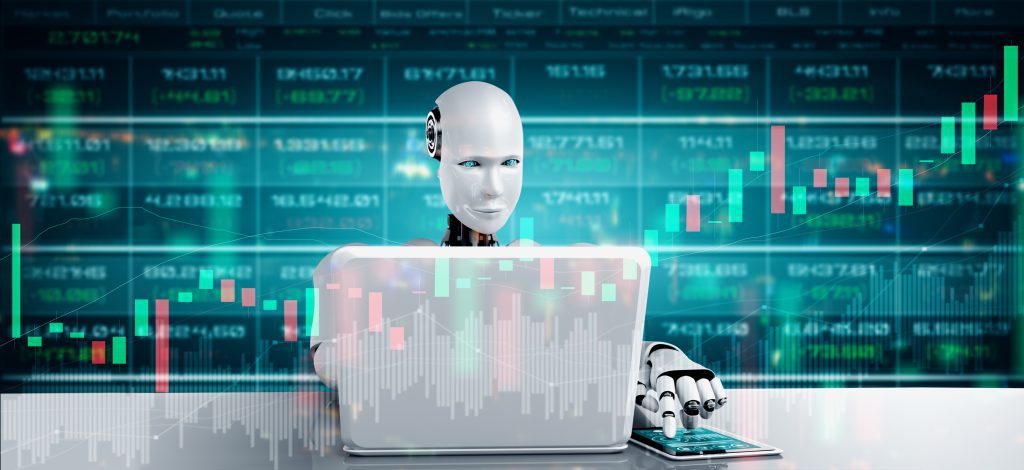The world of cryptocurrencies has been transformed by the emergence of Automated Market Makers (AMM) in the Decentralized Finance (DeFi) ecosystem. These cutting-edge tools have revolutionized how we trade digital assets, providing a more efficient, trustless, and decentralized alternative to conventional market-making systems. As more people embrace DeFi solutions, AMMs have become a critical component in maintaining liquidity and enabling decentralized trading. In this article, we’ll delve into the meaning of AMM in crypto, offering insights into their origins, mechanics, and growing significance within the crypto space.
What is an Automated Market Maker?
An Automated Market Maker (AMM) is an innovative solution that leverages algorithms and smart contracts to facilitate asset trading in a decentralized manner.
Unlike traditional market makers, which rely on human intervention and intricate strategies, AMMs automate the entire process, eliminating the need for manual price-setting and trade matching.
At the heart of an AMM are three key components: liquidity pools, liquidity providers, and smart contracts.
In short, liquidity pools contain funds deposited by liquidity providers, while smart contracts govern the trading process and enforce the AMM’s algorithmic rules. The AMM algorithm, such as the Constant Product Market Maker (CPMM) model, determines prices based on the proportion of assets in the pool, ensuring that the efficiency of the process.
How Automated Market Makers Work


To understand the inner workings of an AMM, it’s essential to recognize the role of liquidity providers. These individuals deposit assets into the liquidity pools, earning fees from trades executed within their pool. These fees are typically a percentage of the trade value and serve as incentives for liquidity providers to participate in the AMM.
Trades within an AMM involve exchanging one asset for another based on the available liquidity in the pool. The AMM algorithm calculates the new prices for both assets after each trade, ensuring that the product of the asset balances remains constant. However, this pricing model can be influenced by trading volume and price slippage, which may impact liquidity pools and result in impermanent loss for liquidity providers.
Impermanent loss occurs when the price ratio of the deposited tokens in the liquidity pool changes after being added to the pool. This can lead to a reduction in the value of a liquidity provider’s deposit compared to if they had held the tokens outside the pool. Understanding impermanent loss and its potential effects is crucial for liquidity providers considering participating in an AMM.
Examples of AMM Platforms
There are several prominent AMM platforms that have gained traction within the DeFi ecosystem. Some of the most popular ones include Uniswap, SushiSwap, and PancakeSwap. These platforms offer users the opportunity to trade various digital assets while also providing liquidity to the market.
Uniswap is a trailblazer in the AMM space, offering a simple, user-friendly interface and supporting a wide array of crypto-tokens. SushiSwap, on the other hand, is a community-driven platform that has introduced additional features such as staking and yield farming. PancakeSwap, a popular AMM on the Binance Smart Chain, has gained attention for its lower transaction fees and unique token offerings.
AMM vs Order Book Model


When it comes to trading assets, there are two primary models in use: the AMM model and the traditional order book model. Each has its own set of advantages and disadvantages, making them suitable for different scenarios and users.
The AMM model relies on liquidity pools and algorithms to facilitate trades, ensuring that transactions execute quickly and with minimal price slippage. This model is highly scalable, allowing for a large number of simultaneous trades. Additionally, it reduces the need for intermediaries, offering a more decentralized and trustless trading experience.
In contrast, the order book model is commonly used by centralized exchanges, with buyers and sellers placing orders at their desired prices. Trades are executed when a matching buy and sell order is found, and the exchange acts as the intermediary. While this model provides more accurate price discovery, it can be susceptible to issues such as low liquidity, high price slippage, and front-running.
AMM Review
Automated Market Makers have become an indispensable component of the DeFi ecosystem, revolutionizing the way we trade digital assets and democratizing access to financial services. As liquidity providers and traders alike continue to embrace these platforms, the AMM model is poised to play an increasingly vital role in shaping the future of decentralized finance.
Whether you’re looking to provide liquidity or simply trade your favorite tokens, there’s never been a better time to explore the world of AMMs. Stay informed on the latest developments in this dynamic space and consider participating in an AMM platform that aligns with your goals and interests. As the DeFi landscape continues to evolve, we can expect to see even more innovative and improved AMM and crypto solutions in the years to come.









